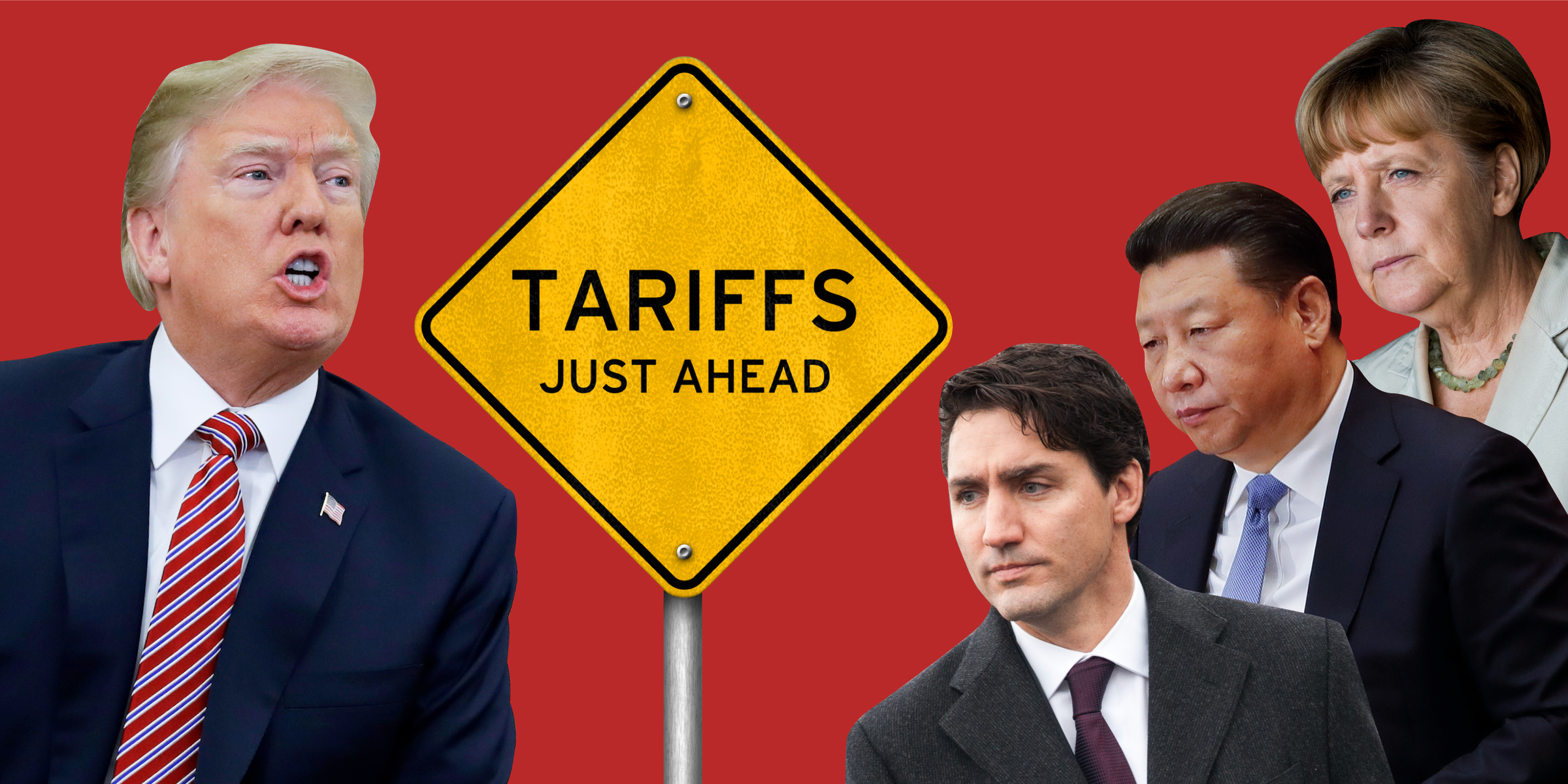Trump's Tariffs: The Devastating Impact On Small Businesses

Table of Contents
Increased Costs of Goods and Services
Trump's tariffs, implemented primarily between 2018 and 2020, significantly increased the cost of imported goods and services. This had a ripple effect throughout the economy, disproportionately impacting small businesses with limited resources and thinner profit margins.
-
Rising Import Prices: Tariffs directly raised the price of imported raw materials and finished goods. This hit numerous industries hard.
- Manufacturing businesses reliant on imported components for production saw their input costs skyrocket.
- Retailers faced higher prices for imported goods, forcing them to either absorb the increased costs or raise prices for consumers.
- The agricultural sector, for example, faced increased costs for imported fertilizers and machinery. Studies showed increases in the cost of imported steel and aluminum, impacting numerous industries.
The resulting effect was a significant reduction in profitability. Higher input costs inevitably translated to higher output costs, making small businesses less competitive in the marketplace.
-
Reduced Consumer Demand: As prices increased across the board due to tariffs, consumers naturally reduced their spending. This decrease in consumer demand further crippled small businesses already struggling with rising input costs.
- Reports showed a significant decline in consumer confidence during this period.
- Many small businesses were forced to lay off employees, reduce hours, or even close their doors entirely due to decreased sales.
- The reduced consumer spending created a vicious cycle, impacting small businesses’ ability to invest in growth and innovation.
Supply Chain Disruptions
The complexities of global supply chains were severely disrupted by Trump's tariffs. For small businesses, this translated into significant challenges in sourcing materials and managing logistics.
-
Difficulty Sourcing Materials: The imposition of tariffs forced businesses to seek alternative suppliers, often located further away and at higher costs.
- Finding reliable replacement suppliers took time and resources, leading to delays in production and fulfilling orders.
- The added complexities of navigating new supply chains increased administrative burdens, diverting time and resources away from core business operations.
- Many small businesses lacked the infrastructure or expertise to effectively manage these complex supply chain disruptions.
-
Increased Logistics Costs: Tariffs not only increased the cost of goods themselves but also dramatically increased shipping and handling costs.
- Port congestion, exacerbated by tariffs and retaliatory measures from other countries, led to significant delays and increased transportation expenses.
- The added logistical complexities increased paperwork, insurance costs, and other administrative expenses.
- These increased logistical costs significantly reduced already thin profit margins for small businesses.
Reduced Access to Capital and Credit
The uncertainty surrounding Trump's tariffs created a climate of economic instability, directly impacting small businesses' access to vital capital and credit.
-
Increased Uncertainty and Risk: The unpredictable nature of the tariffs made it extremely difficult for small businesses to plan for the future and secure loans or investments.
- Lenders became more risk-averse, tightening lending standards and making it harder for small businesses to access credit.
- The resulting credit crunch limited their ability to invest in expansion, equipment upgrades, or even cover operating expenses.
- Many small businesses struggled to secure the capital needed to weather the economic storm.
-
Diminished Investor Confidence: The economic uncertainty created by the tariffs discouraged investors, leading to a decrease in investment in small businesses.
- Investors became hesitant to commit capital in an environment marked by unpredictable policy changes and economic instability.
- The reduced investment hampered the growth and sustainability of many small businesses.
- The long-term implications of this reduced access to capital continue to impact the small business sector.
Conclusion
Trump's tariffs had a devastating and multifaceted impact on small businesses across the United States. Increased costs, supply chain disruptions, and reduced access to capital all contributed to significant financial hardship, forcing many businesses to close their doors or lay off employees. The long-term consequences of these trade policies continue to ripple through the economy, underscoring the vulnerability of small businesses to unpredictable economic shocks. Understanding Trump's tariffs and their impact is crucial for mitigating the impact of future protectionist trade policies. We must advocate for policies that support small business growth and ensure a more stable and predictable economic environment for these vital enterprises. Learning more about the devastating effects of protectionist trade policies on small businesses is essential to supporting their survival and contributing to economic stability. Let's work together to mitigate the impact of future tariffs and safeguard the future of American small businesses.

Featured Posts
-
 No First Dance For Selena Gomez And Benny Blancos Wedding
May 12, 2025
No First Dance For Selena Gomez And Benny Blancos Wedding
May 12, 2025 -
 Thomas Muellers Witty Interview A Bayern Munich Perspective
May 12, 2025
Thomas Muellers Witty Interview A Bayern Munich Perspective
May 12, 2025 -
 Shane Lowry On Rory Mc Ilroy A Friends Perspective On Recent Victories
May 12, 2025
Shane Lowry On Rory Mc Ilroy A Friends Perspective On Recent Victories
May 12, 2025 -
 Indy 500 Satos Entry Finalizes 34 Car Lineup
May 12, 2025
Indy 500 Satos Entry Finalizes 34 Car Lineup
May 12, 2025 -
 Vols Crush Sycamores 12 1 Final Score
May 12, 2025
Vols Crush Sycamores 12 1 Final Score
May 12, 2025
